
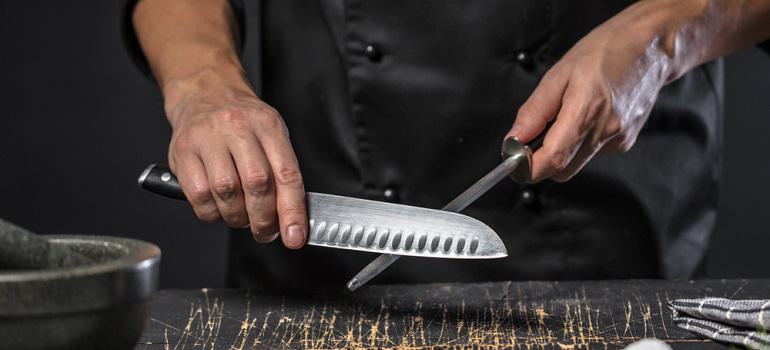
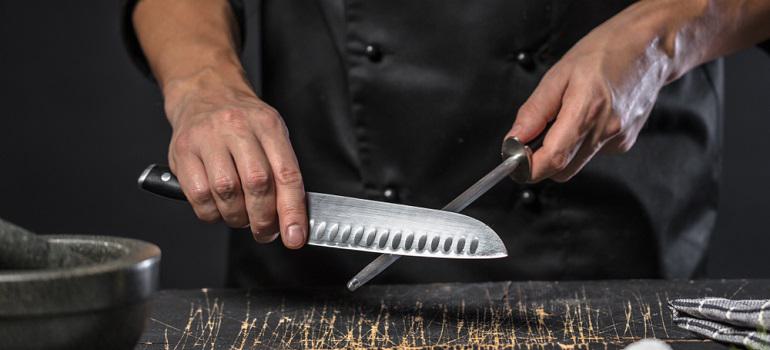
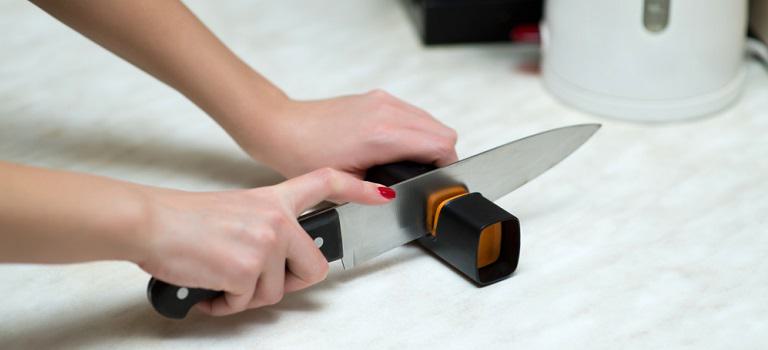 A pull-through sharpener, also called a "manual knife sharpener," is the easiest and cheapest way to sharpen your kitchen knives. A quick fix for a dull knife, a pull-through sharpener features two different slots: a coarse slot to sharpen your knife and a fine slot to polish it. To use a manual sharpener, begin by pressing the blade into the rough side and pulling it towards you a few times.
Once you feel your knife has been properly sharpened, repeat the same process using the fine slot of the sharpener. Because pull-through sharpeners are extremely easy to use, they're often the preferred method for sharpening knives at home. Especially useful for novice cooks, a manual sharpener automatically provides you with the correct angle, which is crucial for the sharpening process of your knife.
While you may not end up with a blade as fine as one sharpened on a whetstone, your chef knife will be significantly sharper than before and able to handle all your at-home kitchen tasks.
A pull-through sharpener, also called a "manual knife sharpener," is the easiest and cheapest way to sharpen your kitchen knives. A quick fix for a dull knife, a pull-through sharpener features two different slots: a coarse slot to sharpen your knife and a fine slot to polish it. To use a manual sharpener, begin by pressing the blade into the rough side and pulling it towards you a few times.
Once you feel your knife has been properly sharpened, repeat the same process using the fine slot of the sharpener. Because pull-through sharpeners are extremely easy to use, they're often the preferred method for sharpening knives at home. Especially useful for novice cooks, a manual sharpener automatically provides you with the correct angle, which is crucial for the sharpening process of your knife.
While you may not end up with a blade as fine as one sharpened on a whetstone, your chef knife will be significantly sharper than before and able to handle all your at-home kitchen tasks.
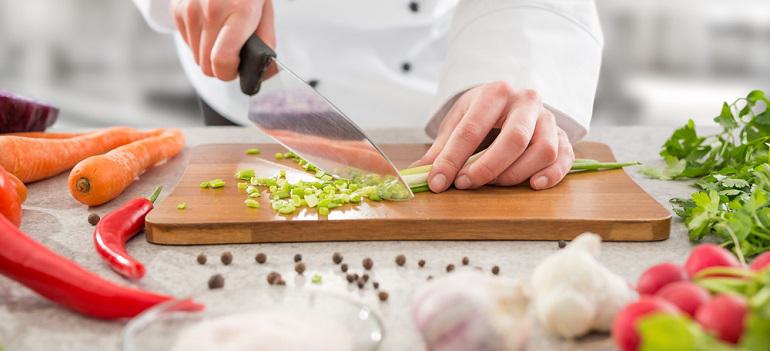 Now that you know how to sharpen a knife properly, it's important to learn how to maintain its sharp blade for as long as possible. As we mentioned before, honing is a process that keeps the cutting edge of the blade straight. Honing your knives weekly will help provide you with a more precise cut and keep your blades well-maintained. And because honing doesn't remove any metal from your knives, you don't have to worry about damaging your blade by doing it often.
Now that you know how to sharpen a knife properly, it's important to learn how to maintain its sharp blade for as long as possible. As we mentioned before, honing is a process that keeps the cutting edge of the blade straight. Honing your knives weekly will help provide you with a more precise cut and keep your blades well-maintained. And because honing doesn't remove any metal from your knives, you don't have to worry about damaging your blade by doing it often.
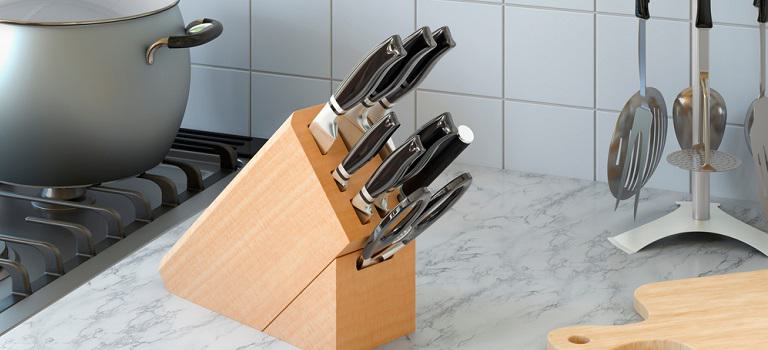 Now that you've taken the time to sharpen and hone the knives in your kitchen, you must store them properly. Proper knife storage will help keep your kitchen tools maintained for longer. There are three main ways to store knives: drawer storage, countertop storage and wall storage. When used correctly, each type of storage can be safe and effective for knives.
Now that you've taken the time to sharpen and hone the knives in your kitchen, you must store them properly. Proper knife storage will help keep your kitchen tools maintained for longer. There are three main ways to store knives: drawer storage, countertop storage and wall storage. When used correctly, each type of storage can be safe and effective for knives.